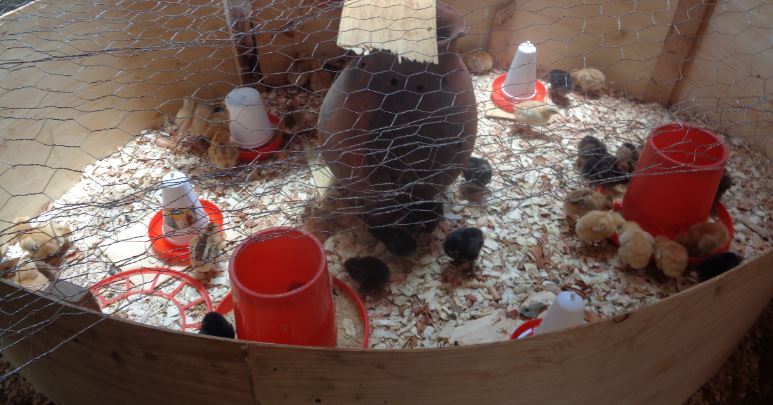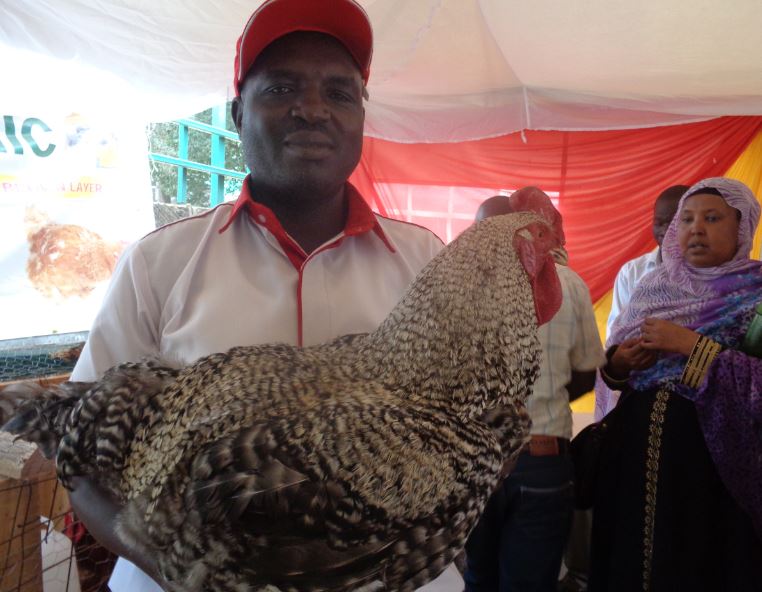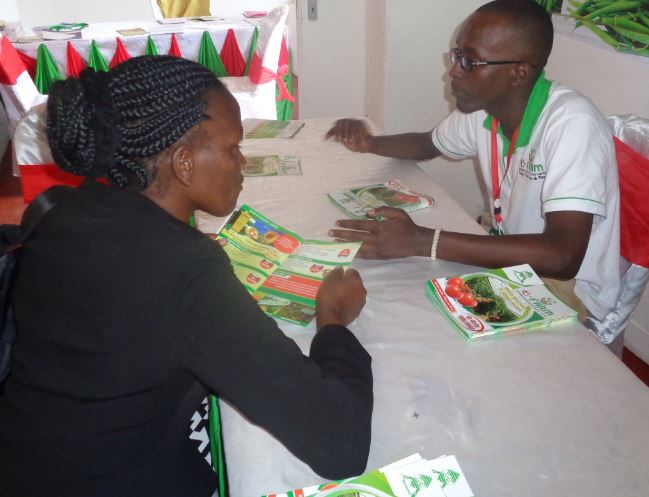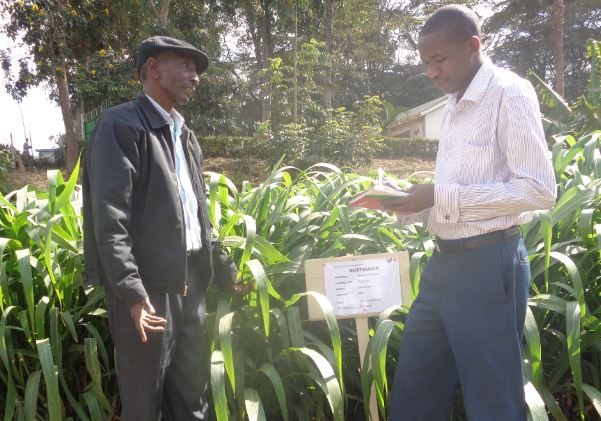The high demand for indigenous chicken in the market has ensured Kukuchic limited has constant source of market for their Rainbow rooster chicks. The company is the breeder and distributor of Fast White Broiler and Rainbow Rooster birds in East Africa. Currently they have three breeder farms and a hatchery with more than 20,000 parent stock of rainbow rooster and a hatchery Capacity of 240,000 chicks per month. The company sells day old chicks at sh. 100 and one month old at 300 and 2 months old at 400 shillings.
One day old Kukuchic Limited chicks. PIC/JAPHET RUTO
“If you look at the market at the moment, there is a high demand for indigenous poultry but the supply is inadequate to meet the market demands” says Luka Cherop, Kukuchic, sales and marketing manager. Kukuchic seeks to breach the demand through production of an improved kienyeji rainbow rooster chicken which can be reared for both meat and eggs.
According to Luka, the rainbow rooster matures between 4 and 5 months, by that time the male will weigh about 3 kgs and the female 2 kgs. The female starts laying eggs at 5 months and will lay eggs continuously for 8 – 10 months giving between 160 and 180 eggs during the laying period.
READ ALSO: Farmers are making a kill with Kenbro chicken
“The advantage of this bird is that it suitable for free range with low technology input, it can feed on grass, sukuma wiki and tomatoes in addition to other commercially formulated feeds for chicken” says Luka.The chicken’s meat has low fat, is sweet and tender meaning it cooks faster than the traditional kienyeji chicken. It also has higher resistance against many poultry diseases.
Luka Cherop, Sales and Marketing Manager, Kukuchic Ltd, holding a mature 8 month old male rainbow rooster at the 2017 Nairobi International Trade Fair. PHOTO/JAPHET RUTO
Rainbow rooster farming can be done with low investment. It requires simple housing and a farmer can improvise drinkers and feeders using available materials e.g. plastic jericans. 1 to 4 weeks old chicks should be fed on chick mash at the rate of between 13 to 50 grams per day. 5 to 8 weeks old can be fed on growers mash or kienyeji mash at the rate of 50 to 70 grams per day in addition to free range roaming. Over 20 weeks old chicken can be fed on layers mash at the rate of 130 g per day.
READ ALSO: Month-old chicks more profitable than day old
Tips on management of day old chicks
- Clean and disinfect the chicken house 2 weeks before arrival of the chicks.
- The brooder should be ready 1 day before chicks arrive.
- Warm the brooder 6 hours before arrival of chicks.
- Ensure adequate drinkers and feeders are in place before arrival of chicks.
- Remove the chicks from the boxes immediately they arrive.
- Closely monitor the behavior of the chicks
Kukuchic has partnered with farmers groups in various Counties in Kenya like Uasin Gishu, Elgeyo Marakwet, Baringo, Siaya, Murang’a, Meru and Turkana amonst others to supply day old chicks to women and youth groups.
READ ALSO: What to consider while buying one day old chicks
The company trains farmers before they purchase the chicks to ensure they are knowledgeable on the management of the birds. They also market farmers’ end products.
Luka Cherop can be reached on + 254 727 578 733.
Write comment (2 Comments)



















